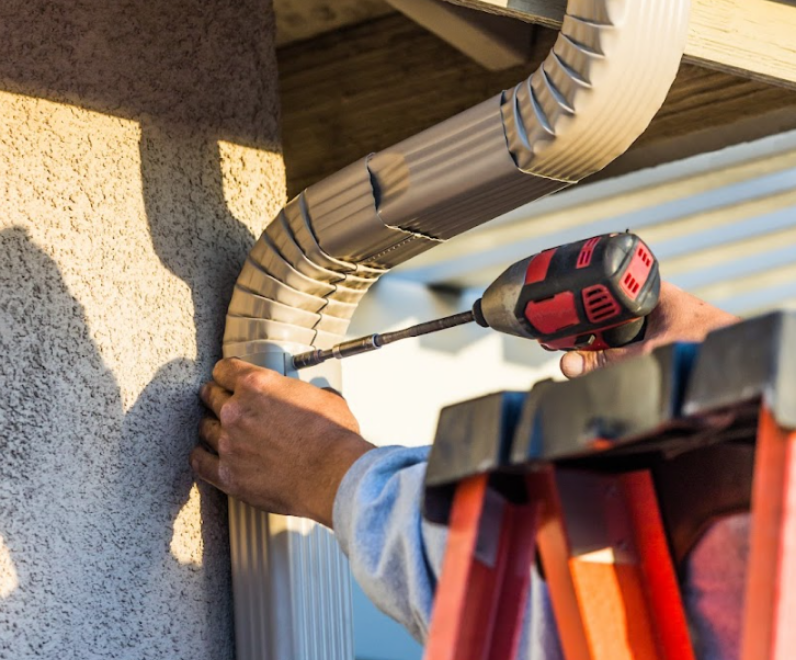Downspouts play a crucial role in a commercial gutter system, acting as the conduit through which water is channeled away from a building’s foundation. Proper installation of commercial downspouts is not only vital for preventing water damage but also for maintaining the integrity of the property’s structure and landscaping. This article discusses the significance of downspouts and offers practical advice for optimizing their placement and functionality.
The Role of Downspouts in Commercial Gutter Systems
Downspouts serve as the final exit point for water collected by gutters, directing it away from the building to prevent erosion, basement flooding, and foundation damage. In commercial settings, where buildings often have large roof areas, the volume of water to be managed can be significant, making the efficiency of downspouts even more critical. Effective downspout installation ensures that water is efficiently transported from the roof to the ground without pooling around the building, which could lead to dampness and structural issues over time.
Tips for Ensuring Efficient Downspout Placement and Function
Strategic Placement
The number and location of downspouts are key to their effectiveness. A general rule of thumb is to have one downspout for every 20 to 30 feet of gutter. Additionally, placing downspouts in areas that naturally slope away from the building helps facilitate better water drainage.
Size Matters:
Commercial buildings may require larger downspouts than residential properties to handle the greater volume of water. Oversized downspouts can be more effective in preventing clogs and ensuring a free flow of water, especially in regions prone to heavy rainfall or snow.
Use of Extensions and Splash Blocks
Downspout extensions or splash blocks can be used to direct water further away from the building, reducing the risk of water damage. These accessories are particularly useful in flat areas where water does not naturally flow away from the structure.
Regular Maintenance:
Even with proper installation, the functionality of downspouts can be compromised by debris, such as leaves and twigs, which may cause blockages. Regular inspections and cleaning are essential to maintain the efficiency of downspouts and prevent water backup.
Integration with Water Management Solutions:
In some cases, downspouts can be connected to a rainwater harvesting system or directed to drain into a rain garden. These solutions not only help manage stormwater but also contribute to sustainable water use practices.
Conclusion
Proper installation and maintenance of commercial downspouts are fundamental to protecting a property from water-related issues. By understanding the critical role downspouts play and following best practices for their placement and care, building owners and managers can ensure their commercial gutter systems function optimally. Whether it’s choosing the right size, strategically positioning downspouts, or integrating them with broader water management strategies, a well-thought-out approach to downspout installation can significantly contribute to a building’s longevity and safety.

